The total area of Bhagwan Birsa Biological Park is 104 hectares. Established in 1994, it is also known as Ranchi Zoo and Ormanjhi Zoo. The Bhagwan Birsa Biological Park is located in Ormanjhi village in the Ranchi district of Jharkhand, India. It is situated on the bank of the Getalsud Dam, an artificial reservoir constructed across the Subarnarekha River, which was opened in 1971.
The Park is about 20 km distance from Ranchi city, the capital of Jharkhand, and situated on both sides of the NH33 comprising two sections, the Zoological section and the Botanical section on the northern side of the Patna-Ranchi NH. The area of the Zoological section is larger covering 81 hectares and the Botanical section is 23 hectares both comprising the park’s total area of 104 hectares (1.04 sq. km).
The zoo is named after Birsa Munda, a famous tribal freedom fighter in the Chotanagpur area, where he is honored as Bhagwan. That’s why the name of this zoo is “Bhagwan Birsa Biological Park”.
Most of the animals in the park are housed in open areas with large moats, which are surrounded by natural vegetation to create a naturalistic habitat and environment for them.
History of the Bhagwan Birsa Biological Park
- Bhagwan Birsa Biological Park was established over a 104-hectare area of notified Protected Forest in Chakla village, Ormanjhi block, Ranchi district, with the objectives of conserving endangered flora and fauna and inspiring visitors to empathize with wild animals and support wildlife conservation.
- The actual construction of the zoo began in the year 1986-87 following the decision of the Government of Bihar to establish it.
- Bhagwan Birsa Biological Park was formally opened to visitors on 26th January 1994.
- The park has been named after Birsa Munda, a renowned tribal freedom fighter from the Chotanagpur region.
- The zoo was initially recognized as a small zoo but it was upgraded to a medium-sized zoo in 2013.
- Until 23rd October 2009, the zoo was under the direct management of the state government, and the revenue collected was deposited in the state exchequer.
- On 23rd October 2009, the Government of Jharkhand established an autonomous body called the Jharkhand Zoo Authority through notification no. WL/21/2007/3361, dated 23.10.2009 for better management of the zoo.
- This notification empowers the authority to manage the revenues generated for achieving the zoo’s objectives through an annual plan of operations approved by the governing body.

Geography of the Bhagwan Birsa Biological Park
The geography of Bhagwan Birsa Biological Park consists of mostly flat land with gentle slopes and some areas of steep contours. The forest is primarily dominated by natural Sal trees and has a variety of floral species with significant regeneration. Half of the eastern part of the zoo is bordered by the perennial water body of Rukka Dam.
Bhagwan Birsa Biological Park, located in Chakla, Ormanjhi, Ranchi, is famous for its natural habitat, which is well-suited for wild animals. Its expansive geographical area, natural vegetation, and easy accessibility make it one of the most sought-after destinations near the capital.
The geographical coordinates of the zoo are situated between latitude 23°02’21.5″ N and longitude 85°02’17.3″ E.
What will you see at Bhagwan Birsa Biological Park
The park is a major tourist attraction in Jharkhand, visited by approximately 8 lakh people annually. The zoo houses approximately 1450 wild animals representing 83 different species of mammals, reptiles, and birds.
There are plenty of spots for sitting throughout the zoo, with drinking water and public restrooms available. There is also a canteen inside. The total walking distance is about 2-3 km. Visitors can explore the zoo on electric vehicles, which can be booked at reasonable prices upon entering the park.
1. Mammals:
The major breeding species of mammals that can be seen at Bhagwan Birsa Biological Park are the Sloth Bear, Royal Bengal Tiger, Himalayan Black Bear, Leopard Cat, Jungle Cat, Striped Hyena, Fox, Jackal, Sambar, Nilgai, Black Buck, Spotted Deer, Barking Deer, Indian Gaur, and Hippopotamus.

2. Birds:
At Bhagwan Birsa Biological Park, you can see many kinds of birds from colorful Indian peafowls to majestic Great White Pelicans. You’ll also find Love Birds, Black Kites, Asian Koels, and even the impressive Eurasian eagle owl. Don’t miss the Common Emus, Lady Amherst’s Pheasants, and waterfowl like Ruddy Shelducks. With a collection of bird species including Rose-ringed Parakeets, Mandarin Ducks, and Common Ostriches, the park offers an attractive experience for bird enthusiasts of all kinds.

3. Reptiles:
There are many kinds of reptiles including both venomous and non-venomous snakes at Bhagwan Birsa Biological Park.
Venomous: Bamboo Pit Viper.
Highly Venomous: Russell’s Viper, Monocled Cobra, Spectacled Cobra and Banded Krait.
Non-venomous: Indian Rat Snake, Indian Rock Python, Checkered Keelback, Red Sand Boa, Common Trinket, Common Sand Boa, Common Krai, and Common Cat Snake.
Other reptiles you might spot at Bhagwan Birsa Biological Park include Mugger Crocodiles, Gharials, Red-eared Slider, and Monitor Lizard.
4. Aquarium:
The Aquarium is one of the largest freshwater aquariums in the country, with a total premises area of 3300 square meters. The aquarium building covers 936 square meters and is named ‘Ranchi Aquarium’.
There are around 1500 beautiful and interesting fish, comprising about 120 species, kept in 58 fish tanks of various sizes for public exhibits. The aquarium houses herbivorous, carnivorous, omnivorous, and scavenger fish. Many exotic fish were sourced from Bangkok, Malaysia, and Singapore by the developer agency.
The interior decoration is scientifically designed, providing ample information about the fish. External decor includes eye-catching paintings, models, fountains, and a picturesque waterfall prototype.
There is also a selfie point inside the aquarium.
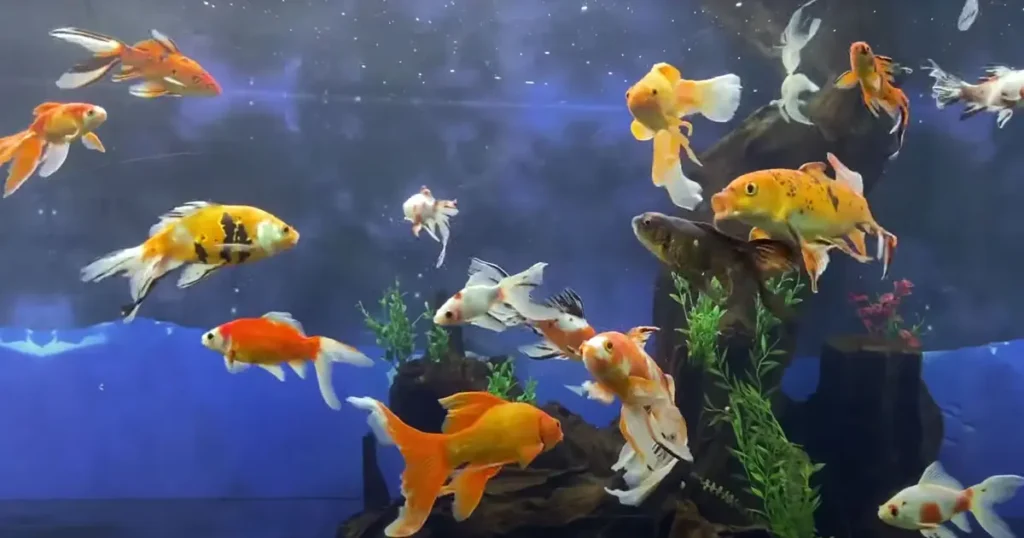
5. Butterfly Park:
The Butterfly Park is situated in the botanical division spread over 20 acres opposite the aquariums in Bhagwan Birsa Biological Park. The park has an area of about 12 acres of natural forest dominated by sal trees while the rest of the area has been planted with more than 100 species of host and nectar plants keeping in mind the diversity of butterfly species.
More than 80 species of butterflies have been recorded in this Butterfly Park of Ranchi, seeing which you will be mesmerized. The habitat of each butterfly species has been designed according to its migration behavior.
The conservatory is covered with fine mesh wire, which protects these delicate creatures and provides safety from predators. There are three fountains inside the conservatory which are very important for the butterfly because from the fountains moisture remains in the atmosphere. For demonstration, a detailed model related to the life cycle of a butterfly has been prepared in which the complex life cycle of a butterfly has been depicted.
It is one of India’s largest butterfly parks, a unique place for butterfly and nature lovers to visit.

Birsa Bhagwan Biological Park Ticket Price
The ticket price for entering Birsa Bhagwan Biological Park is free for students and minors on Independence Day (15th August), Republic Day (26th January), Children’s Day (14th November), and Wildlife Week (2nd to 8th October). Online ticket booking is available at https://birsazoojharkhand.in/
| 1. Entry Fee | ||
| Sl. | Details | Rs. |
| 1. | Adult | Rs. 60/-(including saanp Ghar) |
| 2. | Children (age group of 3-12) | Rs. 20 /- |
| 3. | Handicapped Person/Child below 3 years of age | Free (But not counted in group ticket) |
| 4. | Adult (group ticket 25 or more than 25) | Rs.40/- |
| 5. | Children (group ticket 25 or more than 25) | Rds.15/- |
| 2. Special Day Entry Fee: Every year on 31st December, 1st & 2nd January | ||
| 1. | Adult | Rs. 70/- |
| 2. | Children (age group of 3-12) | Rs. 30/- |
| 3. Photography Fee: | ||
| 1. | Video Camera (Professional Use) | Rs. 1000/- (Per day) |
| 2. | Video Camera (Advertising & Film/ Movies) | Rs. 3000/- (Per day) |
| 4. Parking Fee: | ||
| 1. | Car | Rs. 50/- (Per Day) |
| 2. | Motorcycle / Scooter | Rs. 25/- (Per day) |
| 5. Battery-operated Vehicle Fee: | ||
| 1. | Bus | Rs. 400/- (Per Hour) |
| 2. | Per Seat | Rs. 50/ |
| 6. Boating Fee: Per Trip of 15 Minutes | ||
| 1. | Paddle Boat (2-Seater) Rs. 50/- (Per Trip/15 Minutes) | Rs. 50/- (Per Trip/15 Minutes) |
| 2. | Paddle Boat (4-Seater) Rs. 80/- (Per Trip/15 Minutes) | Rs. 80/- (Per Trip/15 Minutes) |
Birsa Bhagwan Biological Park Opening Hours
1 From 16th October to 15th February every year, entry tickets are available from 9:00 am to 4:00 pm.
2 From 16th February to 15th October every year, entry tickets are available from 9.00 am to 4.30 pm
3 Every Monday closed.
Best Time to Visit
The best time to visit Birsa Bhagwan Biological Park is during winter, as the weather is not too hot for traveling, and animals come out to bask in the sunlight. It takes around 5 hours to view all the animals, including the snake house and aquarium.
Conclusion
The Bhagwan Birsa Biological Park established in 1994 covers 104 hectares also known as Ranchi Zoo and Ormanjhi Zoo has lots of animals and greenery, so it feels good while visiting. Electric vehicles are available inside the park allowing elderly persons and families to visit the zoo comfortably. It is also available for car parking. The opening time of the park is 9.00 am to 4.00 pm from 16th October to 15th February and 9.00 am to 4.30 pm from 16th February to 15th October every year. It is a good place to visit nature and have some fun with family and friends, while also providing information about ecology and animals. The best time to visit Bhagwan Birsa Biological Park is during winter.
FAQ
a.) In which district of Jharkhand is Birsa Bhagwan Biological Park located?
The Bhagwan Birsa Biological Park is located in Ormanjhi village on the bank of the Getalsud Dam in the Ranchi district of Jharkhand, India. The park is situated on both sides of NH-33, comprising two sections: the Zoological section and the Botanical section on the northern side of the NH. It is approximately 20 km from Ranchi city, the capital of Jharkhand.
b.) What time does Butterfly Park Ranchi open?
The park is closed on Mondays and open from 9:00 am to 5:00 pm every other day. Butterflies mainly feed on flower nectar, hopping from one flower to another.
c.) What is the ticket price of Ormanjhi?
At Ormanjhi Water Park, weekday tickets (Monday to Friday) are ₹500 for adults and ₹250 for children (3 to 4 feet tall). On weekends (Saturday and Sunday), adult tickets are ₹600. Prices as of January 30, 2024.
d.) What animals are in the Birsa Zoological Park?
The Birsa Zoological Park houses approximately 1450 wild animals representing 83 different species of mammals, reptiles, and birds. The major breeding species of the park are the Royal Bengal Tiger, Himalayan Black Bear, Leopard Cat, Jungle Cat, Jackal, Sambar, Nilgai, Spotted Deer, Hippopotamus, Indian Peafowl, Ostrich, Emu, and various species of pheasants.
e.) How big is Ranchi Zoo?
The area of Bhagwan Birsa Biological Park is 104 hectares. Established in 1994, it is also known as Ranchi Zoo and Ormanjhi Zoo.



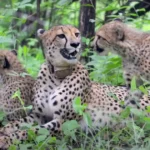
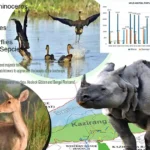

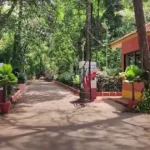
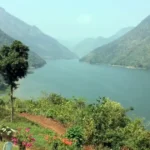


1 thought on “Bhagwan Birsa Biological Park”